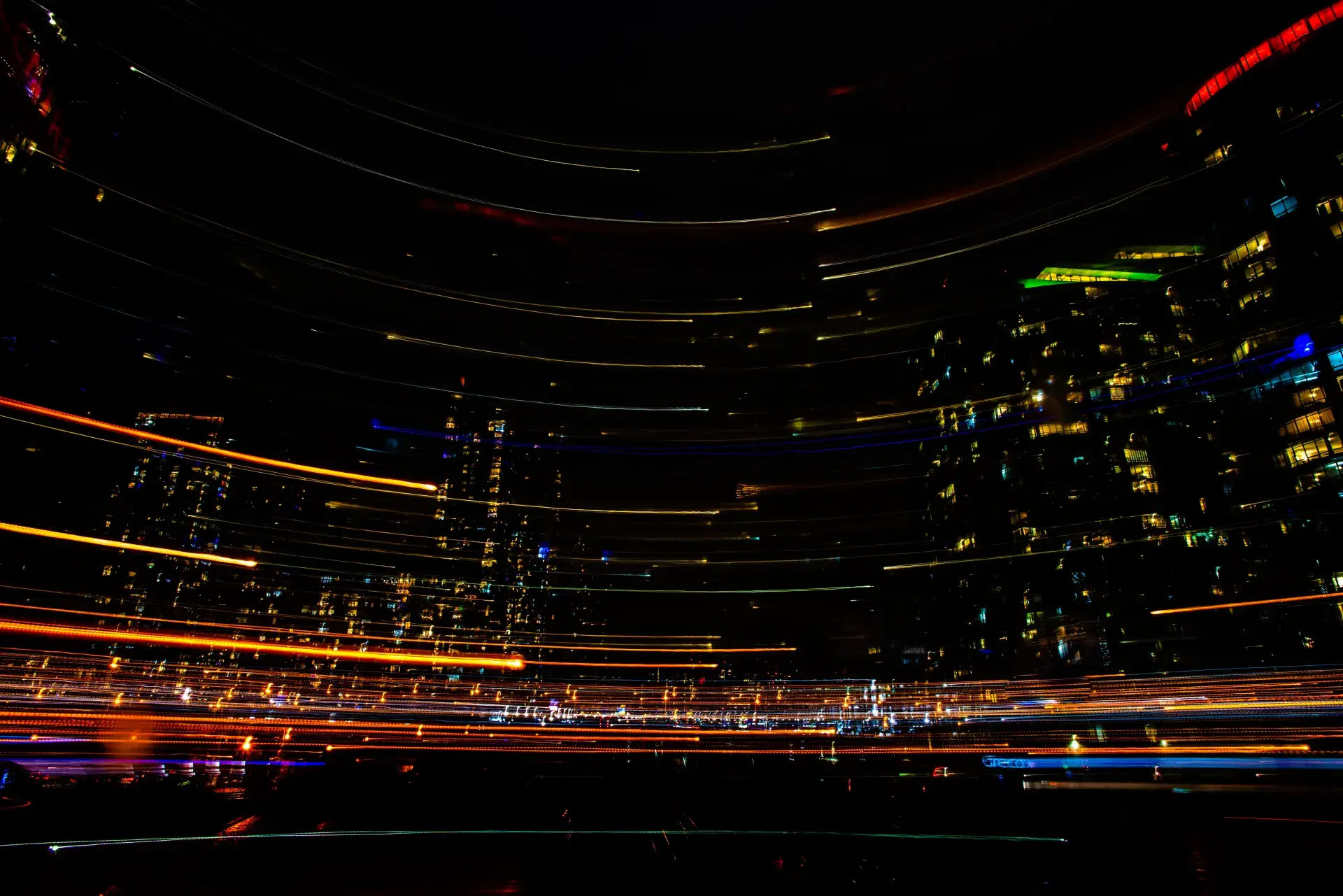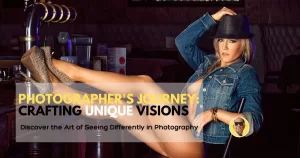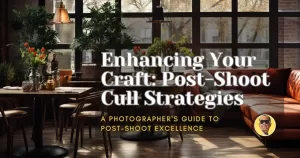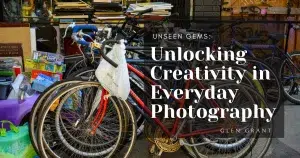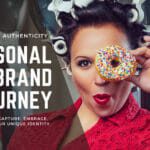MidJourney V6 Digital Art is redefining the boundaries of AI-powered creativity and brings with it the Power of Imagination, elevating the standards of AI-generated imagery with enhanced precision, realism, and creative flexibility. Currently in their latest serving version 6 is in alpha testing and introduces several significant enhancements and changes compared to its predecessor. In the ever-evolving landscape of digital art.
MidJourney’s latest release, marks a significant leap forward. This cutting-edge tool is not just an update; it’s a complete overhaul that promises to redefine the boundaries of creative expression. So let me take you through the myriad of enhancements and new features that make V6 a game-changer in the world of digital imagery as is known to me at this writing but understanding it’s in (alpha test) so changes are part of the game going forward.
V6 supports Pan / Zoom / Vary (Region)
- How It Works
- Utilize URLs as Style Guides – Add
--srefto your prompt followed by URLs to your chosen images. - Fine-Tune Your Aesthetic – Adjust the influence of each style with weights (
--sref urlA::2 urlB::3). - Control Stylization Strength – Use
--swto set how strongly the style influences the final image (--sw 100for default). - Compatibility
- Versions Supported: Available for both V6 and Niji V6.
- Note: Not compatible with V5 and earlier versions.
V6 supports Pan / Zoom / Vary (Region)
- These options appear under (bot upscales) and on the alpha website.
- Pan now acts more like zoom. It should be easier to use and give higher quality results (with more coherence and less repetition of concepts)
- Pan now works with:
upscale/vary/remix – but doesn’t infinitely increase resolution anymore.
V6 Change list
- Upscales are now 2x faster
(uses 2x fewer GPU minutes) - Improved aesthetics, coherence, prompt adherence, and image quality
- Improved text rendering
text must be in “quotations” in prompt - Improved performance at high
--stylizevalues
Let’s discuss the major takeaways in brief:
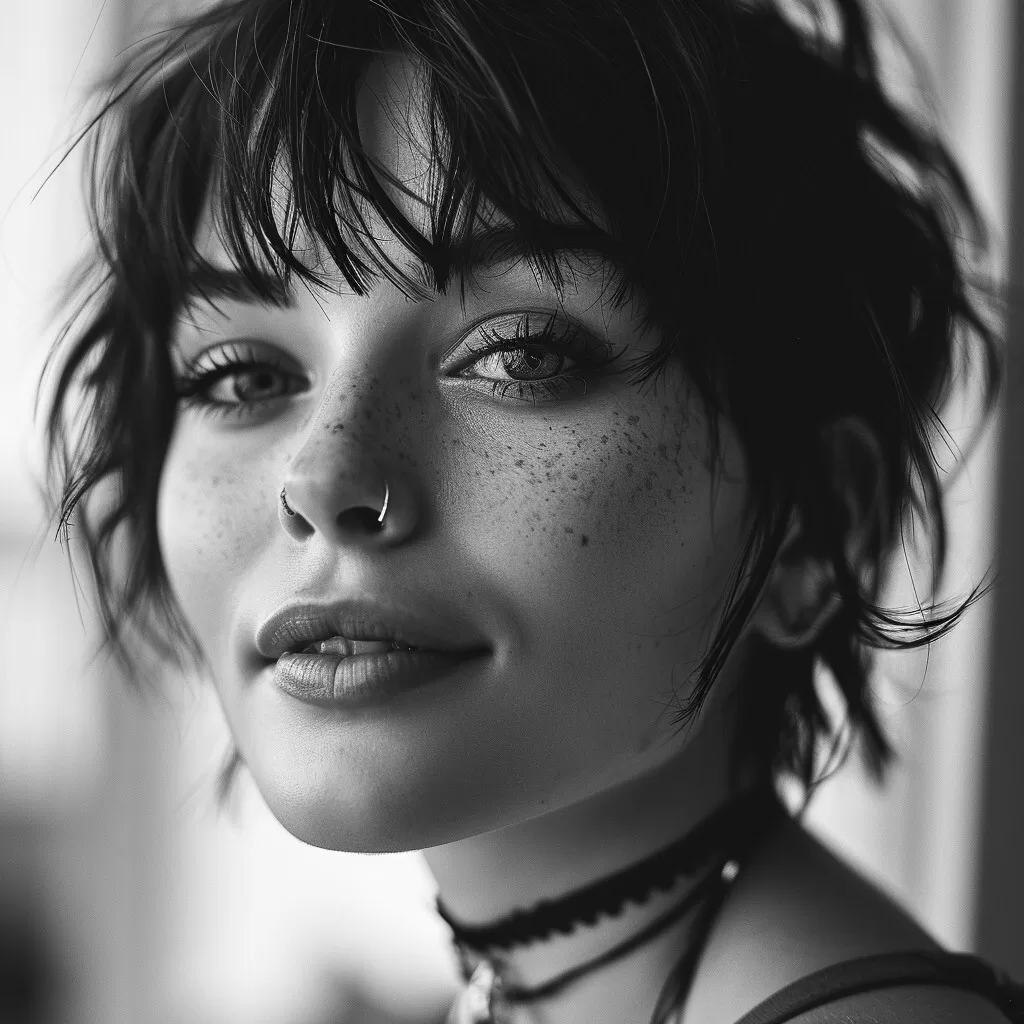
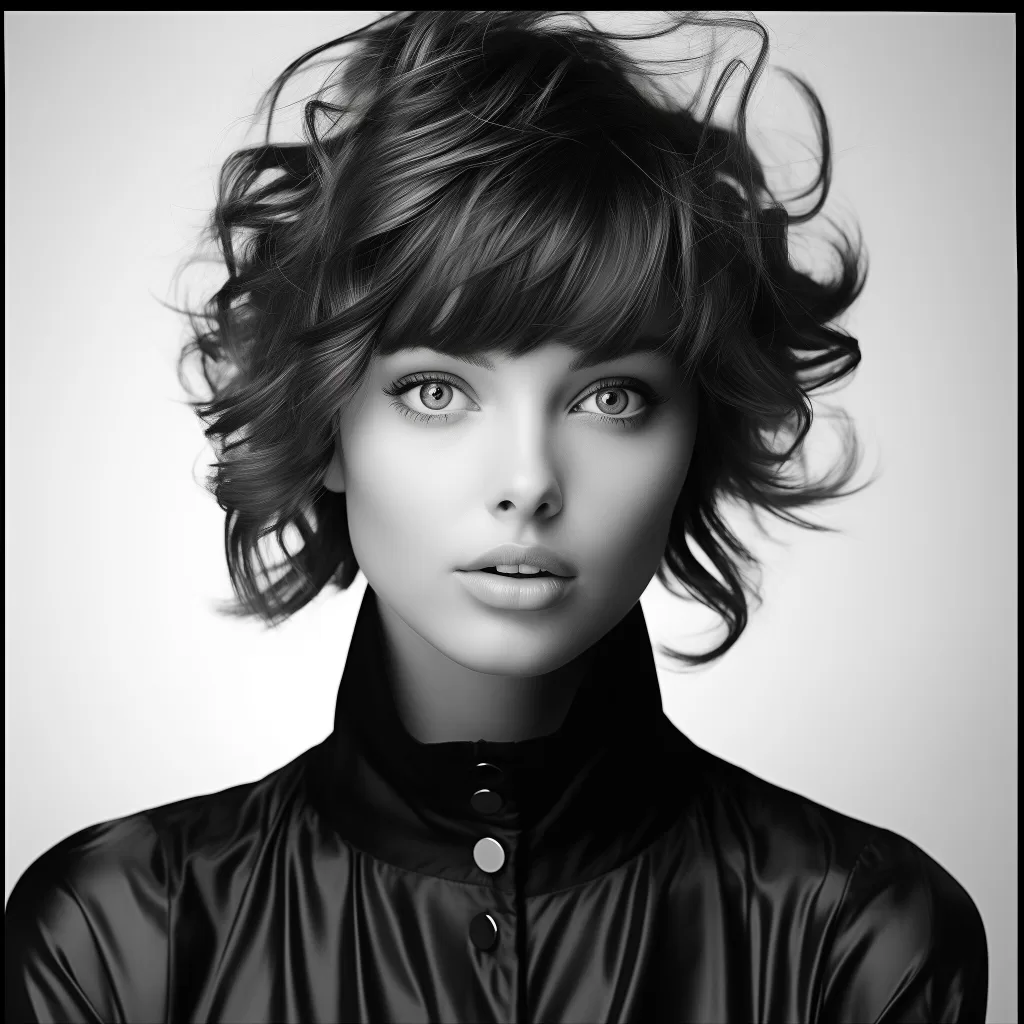
realistic black and white portrait of a chic model 25 years old, perfect hair cut short at the nape of the neck, heavy eye makeup, black eyeliner, black blended eye shadow, with a great smile, laughing, looking towards me as she stares at camera lens, having a 70s feel, look and vibe to the image and photography, light white, Hollywood / vogue 70’s style lighting minimalism, background white –ar 1:1 –s 750 –style raw –v 6.0
Table of Contents
Power of Imagination enhanced by new features
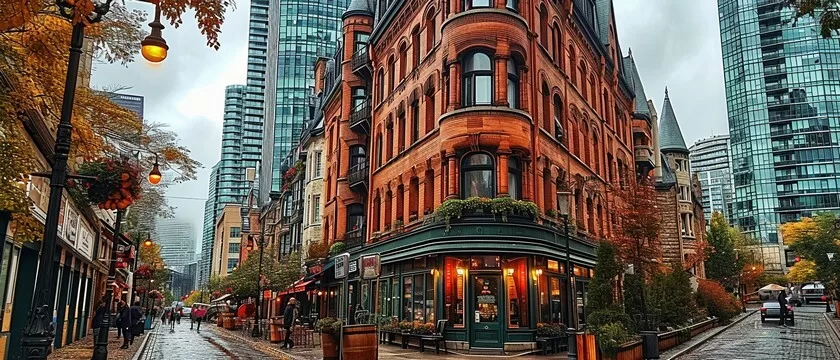
- Enhanced Prompt Accuracy and Length: The model now follows prompts more accurately and can handle longer prompts. One of the standout upgrades in V6 is its ability to comprehend and follow prompts with remarkable precision. This newfound accuracy is complemented by the model’s capability to handle extended prompt lengths.
For artists and creators, this means the ability to convey more complex, detailed visions, and see them brought to life with unprecedented clarity. - Improved Coherence and Knowledge: The model exhibits better coherence in its outputs and has enhanced knowledge.
- Advanced Image Prompting and Remixing: The model offers improved capabilities for image prompting and remixing.
- Text Drawing Ability: V6 can draw minor text if it’s written in quotations, and adjusting the –stylize value or using –style raw can enhance this feature.
- Improved Upscalers: Two new modes, ‘subtle’ and ‘creative’, have been introduced to upscale images, effectively doubling their resolution.
The upscaling capabilities of V6 are nothing short of revolutionary. With two distinct modes – ‘subtle’ and ‘creative’ – the model can upscale images by 2x while catering to different aesthetic preferences. The ‘subtle’ mode maintains the original’s integrity, ideal for precision-focused images. The ‘creative’ mode, on the other hand, adds an artistic flair, perfect for when you’re feeling adventurous. Easily accessible via U1/U2/U3/U4 buttons, these upscaling options empower users to transform their images into high-resolution masterpieces.
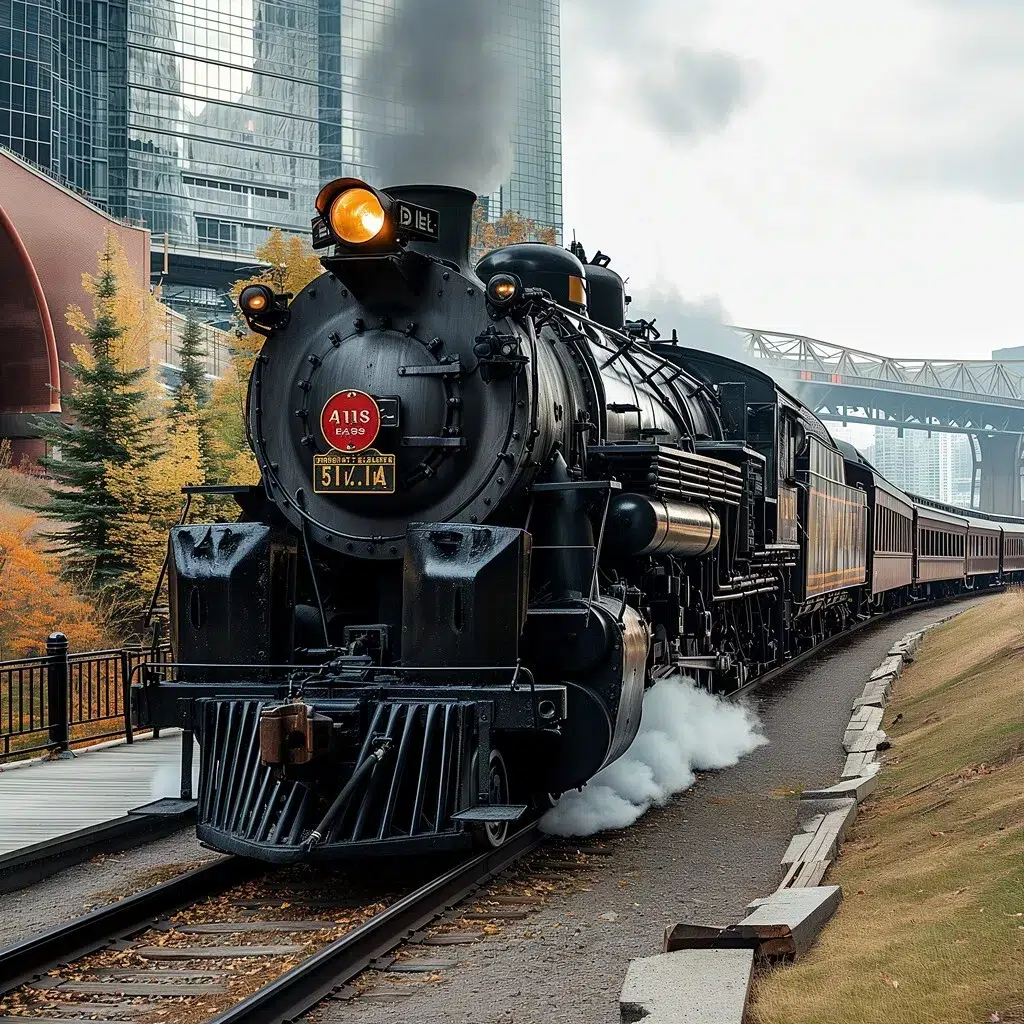
epic scenery of moving locomotive during autumn countryside feel with great scenic outdoor vibrant colors { inserted is my original photo of train} shot should be wide angled appearance, detailing and sharp focus –ar 1:1 –s 700 –style raw –v 6.0
Below ration: 16:9
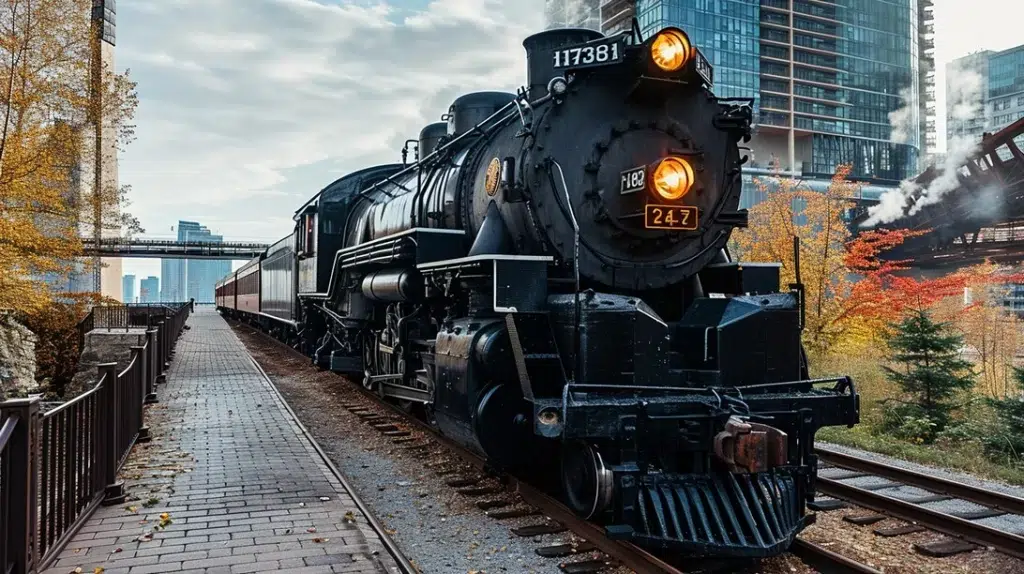
Supported Features at Launch
- Aspect Ratio (
--ar) - Chaos (
--chaos) - Weird (
--weird) - Tile (
--tile) - Stylize (
--stylize) - Style Raw (
--style raw) - Vary (subtle and strong)
- Remix, Blend (
/blend) - Describe (
/describe)
Features in Development
- Pan, Zoom
- Vary (region)
- Tune, and an updated version of Describe (specific to V6) are anticipated in the coming month.
Style and Prompting in V6
- New Prompting Approach: V6 requires a different prompting technique compared to V5. It’s more sensitive to prompt details, so avoid unnecessary descriptors and be explicit about desired outcomes.
- Photographic/Literal Outputs: Use –style raw for more literal, less opinionated, or photographic results.
- Stylize Values: Lower stylize values might offer better prompt understanding, whereas higher values enhance aesthetics.
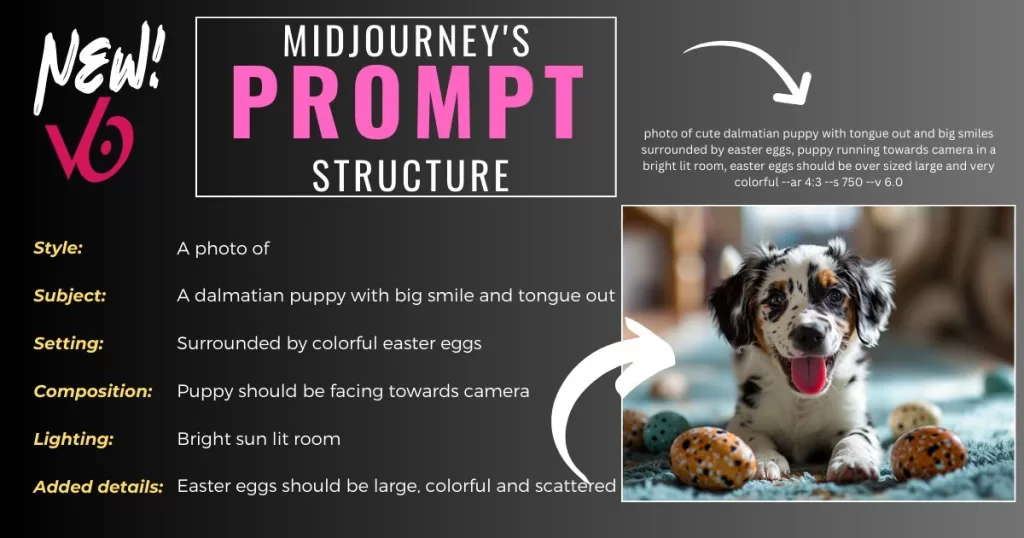
Structured Approach to Image Prompting
I have already started to experiment with a simple yet comprehensive prompt structure that mirrors a typical linguistic framework. This structure encompasses six essential components laid out below; this brings with it a whole new re-teach to my own prompting style and will for you too. (I’ve placed mine notes on a sticky next to my display to keep me focused.
- Style
- Purpose: Sets a specific aesthetic or artistic direction for the image.
- Details to Include: Mention the preferred style or era (e.g., modern, Renaissance).
- Subject
- Purpose: Identifies the main focus of the image.
- Details to Include: Describe the subject’s characteristics (e.g., appearance, colors, unique features), whether it’s a person, object, or animal.
- Setting
- Purpose: Defines the backdrop or environment surrounding the subject.
- Details to Include: Include the location type (indoor, outdoor, imaginary), environmental elements (nature scenes, urban landscapes), time of day, and weather conditions.
- Composition
- Purpose: Decides the layout and perspective of the subject and other elements.
- Details to Include: Specify the viewpoint (close-up, wide, aerial), angle, and specific framing preferences.
- Lighting
- Purpose: Determines the mood and visual tone of the image.
- Details to Include: Describe the lighting type (bright, dim, natural) and mood (cheerful, mysterious), along with any atmospheric effects.
- Additional Info
- Purpose: Adds depth and complexity to the image.
- Details to Include: Mention secondary elements like objects, characters, animals, and their interactions or relative placement to the main subject.
- Style References (added 01-Feb.-2024)
See below for details
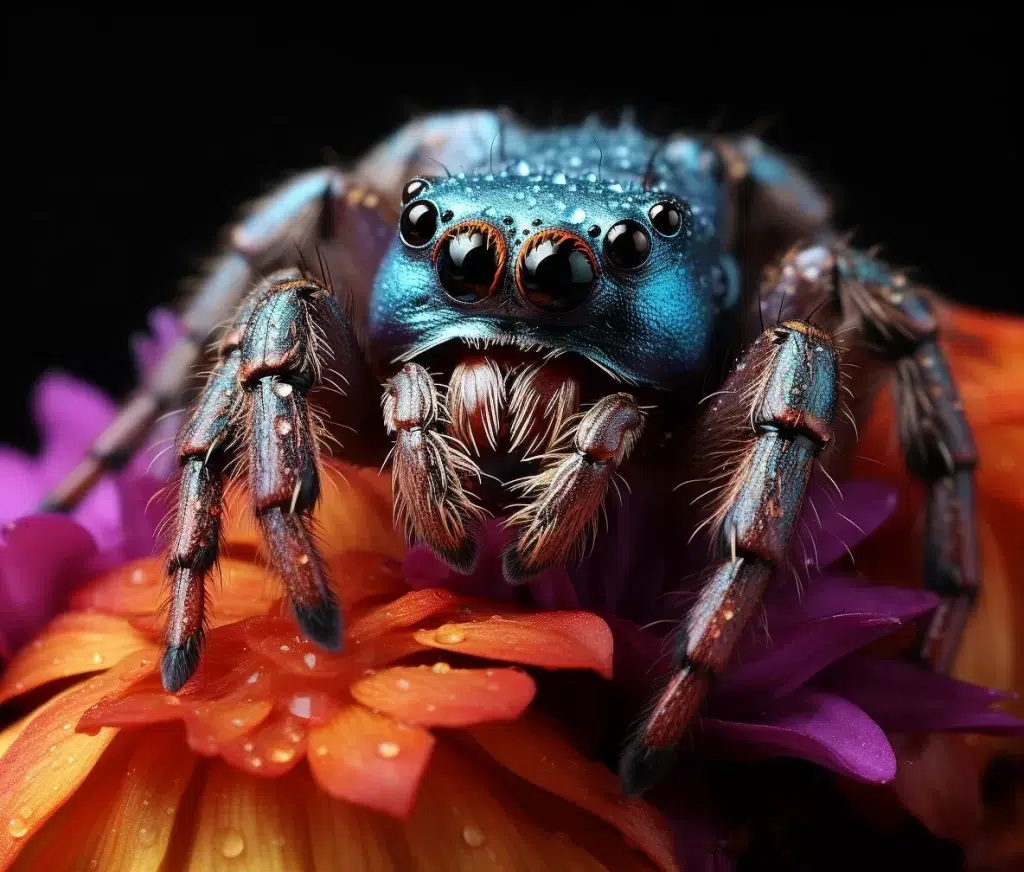
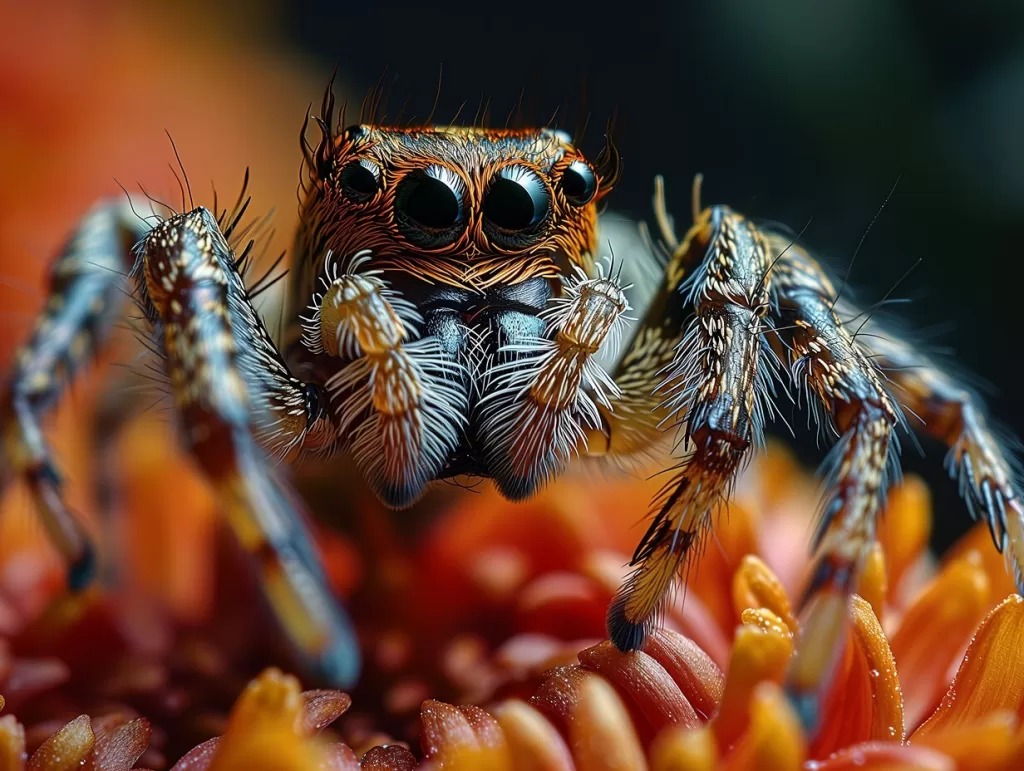
accurate in details photo of a spider forward facing to camera very sitting on a chrysanthemum flower, shot on extreme midnight black background, close-up, macro full frame exposure –chaos 5 –ar 4:3 –s 750 –style raw –v 6.0
Style References – Key Features:
- Style References allow users to define a consistent style across their generated images by referencing external images as style guides.
- Users can include one or more URLs to images that describe the desired consistent style using the
--srefcommand. - The image model will consider these URLs as “style references” and attempt to match their aesthetics in the generated images.
How to Use Style References:
- Initiating Style References: Add
--srefafter your prompt and then list the URLs to the images that represent your desired style. For example:--sref urlA urlB urlC. - Weighting Different Styles: Assign relative weights to different styles by appending
::followed by a number to the URLs, such as--sref urlA::2 urlB::3 urlC::5.
This allows for nuanced control over the influence of each style reference. - Setting Stylization Strength: Use
--swfollowed by a number to set the overall strength of the stylization. The default is 100, with 0 turning off stylization and 1000 being the maximum strength. - Order of Prompts: Place regular image prompts before
--srefcommands to ensure proper processing. For instance:/imagine cat ninja ImagePrompt1 ImagePrompt2 --sref stylePrompt1 stylePrompt2.
Compatibility: (very important)
- The “Style References” feature is compatible with both V6 and Niji V6 versions of MidJourney.
- It is not compatible with V5 and earlier versions.
This feature enhances the ability to generate images with a more tailored aesthetic, offering users creative control over the style of their outputs based on existing images. It’s a powerful tool for aligning generated images with specific branding or artistic styles, making it particularly useful for projects requiring a consistent visual theme.
In General – Important Considerations
- Alpha Testing Phase: As I’ve repeated a few times this is their first release public and it is Alpha so expect frequent changes and updates, as V6 is still in it’s testing phase.
Check those Discord channels for update announcements, prompt help and general support. - Model Availability: The exact features and capabilities of V6 might change before its full release.
- Improvements and Performance: Over time, speed, image quality, coherence, and prompt accuracy are expected to improve. However, currently, V6 is slower and more resource-intensive than V5.
- Community Standards: Given V6’s ability to generate highly realistic imagery, there’s a heightened focus on community standards and moderation.
As such MidJourney has issued the following (paraphrased):
This version of the model is capable of producing imagery with a level of realism that surpasses all our previous releases. We have significantly enhanced our moderation systems to enforce our community standards more strictly and rigorously. Please refrain from inappropriate behavior and avoid creating images that may incite controversy.
Overall, V6 promises significant improvements in image generation quality and functionality, but users should remain adaptable to ongoing changes and updates during its alpha testing phase.
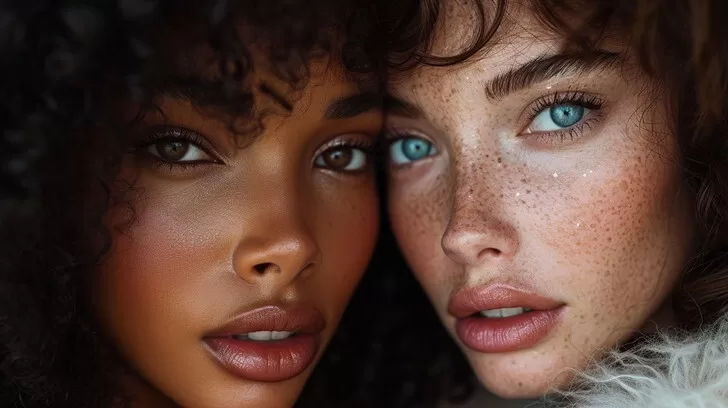
Update and Accuracy Advisory
This article provides an overview and analysis of MidJourney V6 (Alpha) based on the currently available information and my initial, albeit limited, testing. These tests involved using prompts from previous works created with MidJourney V5.2 for comparison and understanding the advancements in V6.
It’s important to note that AI technology, especially in such innovative tools as MidJourney, is in a constant state of evolution and refinement. Therefore, some features or functionalities of MidJourney V6 discussed in this article might undergo changes after publication.
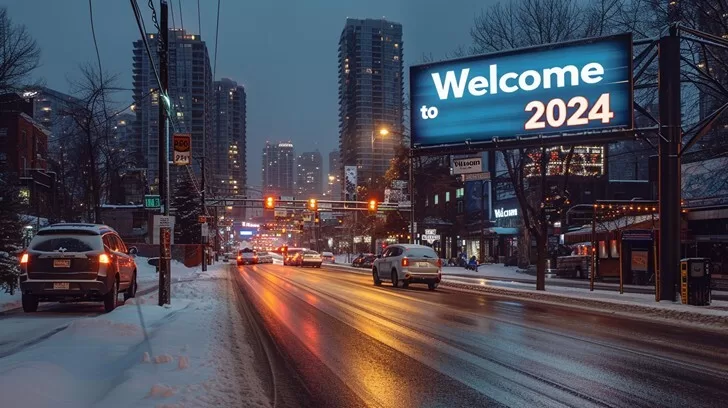
As I continue to experiment more extensively with MidJourney V6 and compare it with its predecessors, I plan to update this article to reflect new insights and any modifications to the software. These updates will be aimed at maintaining the relevance and accuracy of the content.
While I endeavor to present precise and up-to-date information, there is always a possibility of minor errors or omissions in the rapidly changing field of AI-driven digital art. Readers are encouraged to keep this in mind and to verify the latest updates directly from MidJourney sources or their Discord Channel
Stay Updated and Connect
For the latest updates on this article and more, you can follow my discussions on Threads or connect with me on Facebook, all available at @glenegrant or hit me up via my contact here. Your insights and experiences with MidJourney V6 are valuable, and I look forward to our continued exploration in the world of AI and digital art.
